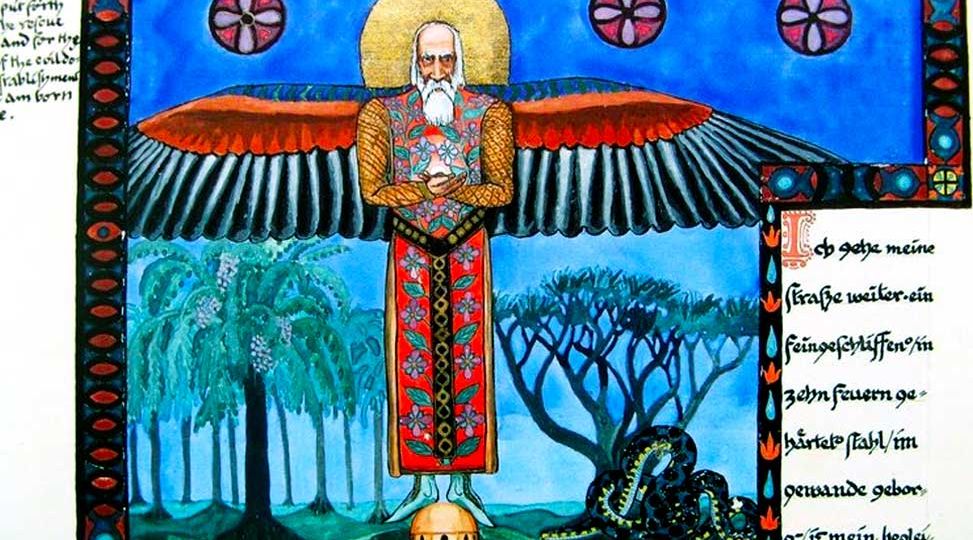
The Integrity of Carl Jung
Jennifer Soper, October 1, 2014
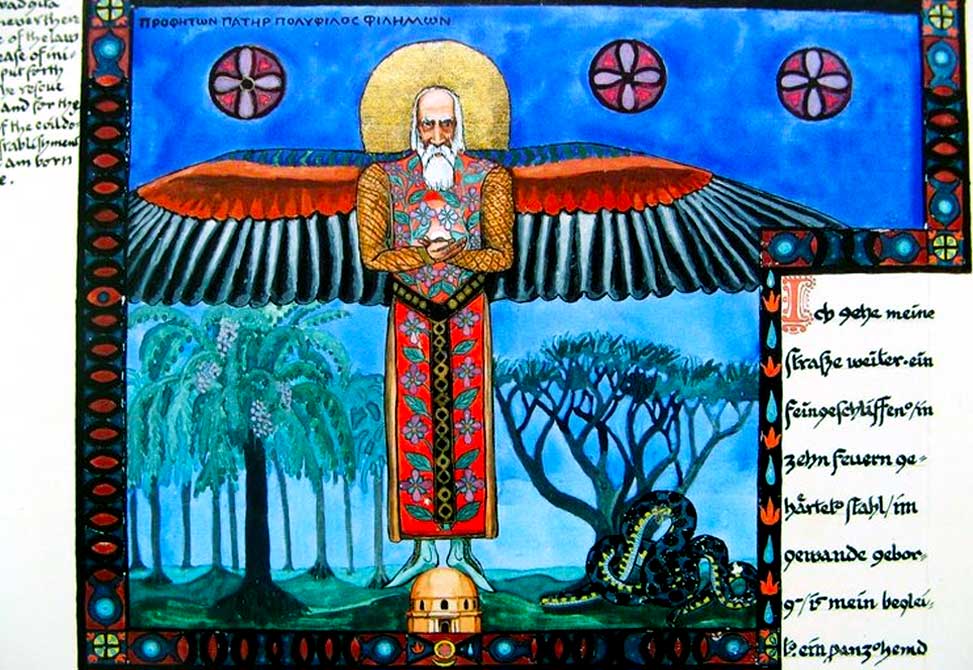
Jungian analyst John Beebe (2012) argues that C. G. Jung’s dominant function would have been introverted intuition: “As adept as Jung’s thinking function was, I believe it was never more than an auxiliary function for him and that his inborn dominant function was introverted intuition” (p. 62). In MBTI® terminology, Beebe is positing that Jung was an INTJ.
Jung started writing the material for his Red Book in 1913 when he was approaching 40, and in fact, midlife is typically when a period of psychological rebalancing occurs. At this time, the death of the heroic attitude creates a void and gives us an opportunity to build relationships with other parts of our psyche. Sonu Shamdasani (2009), editor of The Red Book, explains that Jung saw the second half of life as a “time of conserving previous values together with their recognition of the opposites. This meant that individuals had to develop the undeveloped and neglected aspects of their personality” (p. 80). The riches of early life are not wasted; rather, they become the foundation upon which a more fully-integrated life can be built.
A state of wholeness is a state of balance, of holding the tension of the opposites. “Without balance you transgress your limits without noticing what has happened to you. You achieve balance, however, only if you nurture your opposite. But that is hateful to you in your innermost core, because it is not heroic” (Jung, 2009, p. 226). First comes the development of the Hero; next is the “fall” or death of the Hero, which brings awareness that something is missing in the psyche, leading to the rejection of the heroic inflation and the longing for more. Then comes the real “journey,” the quest for balance in the psyche; holding the tension of the opposites; and crucially, holding the tension between our highly conscious dominant/superior function and our much less conscious inferior function, namely, between the Hero and the Anima/Animus.
Addressing the slaying of the Hero Siegfried early in its pages, The Red Book (Jung, 1990, pp. 160-161) is ultimately a “post-heroic” work (Shamdasani & Beebe, 2010, p. 417). The Red Book contains an intimate account of Jung’s engagement with “the spirit of the depths” while Shamdasani’s wide-ranging 95-page Introduction sets Jung’s narrative in the context of the “spirit of the times” in which Jung was living. Jung realized that we have to pay attention to the spirits of both realms and that he had neglected the spirit of the depths (inner work) in favor of the demands and accolades of daily life. In The Red Book, he chronicles his own path of individuation through his inner work and also seeks to determine principles that apply to psychological development in general. The lessons he learned can apply to our own lives.
Beebe translates Jung’s journey of individuation into function terms, observing that we move towards wholeness by developing the “spine” of our personality:
The superior function and the inferior function are two points along a human line, and that human line is the plumb line of the personality which I call the spine. And I like to think of the superior function as the head of the spine, and the inferior function as the tail of the spine. This definition of the spine is a very real thing. … That sense of self we all have is along that mysterious axis between what we are best at and what we are worst at, which is the spine of our personality, and there is our uprightness, there is our integrity. (Beebe, n.d., para. 17)
Our integrity lies in uniting the flat, one-dimensional world of the Hero with the hidden dimension of the Anima/Animus. Doing so gives us our psychological backbone.
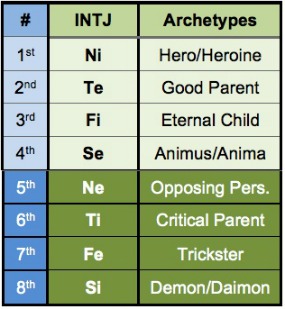
If you look outside yourselves, you see the far-off forest and mountains, and above them your vision climbs to the realms of the stars. And if you look into yourselves, you will see on the other hand the nearby as far-off and infinite, since the world of the inner is as infinite as the world of the outer. … This inner world is truly infinite, in no way poorer than the outer one. (p. 229)
Jung (1921) explains in Psychological Types that “[introverted intuitive types] are living evidence that this rich and varied world with its overflowing and intoxicating life is not purely external, but also exists within” (para. 665). However, in order to develop his spine, Jung had to set aside his introverted intuitive knowings of the workings of the universe and engage with his unconscious. Doing his inner work connected him with his inferior function, extraverted sensing, and as a result, he found his integrity.
The Active Imagination Dialogues
In November 1913, Jung began a series of active imagination dialogues. The sessions continued through April 1914, and the material from this period became “the primary part of the material he [would] use to create The Red Book a couple of years later” (Stein, 2010). Jung dialogued with a series of fantasy figures that appeared to him upon invitation during periods of quiet in which he purposely emptied his mind of all content and paid attention to his mood (Shamdasani, 2009, p. 53). He determined to stay open to whatever the figures had to tell him, no matter how unpalatable. He treated these imaginal encounters as real, and he engaged with the figures; he was not a detached observer. Because of this mutual engagement, one interesting point of note about these figures is that they, too, were influenced and changed by their encounters with Jung, according to his account. This was not a one-way street; Jung had something to offer them as well as something to learn. A necessary first step of individuation is to develop the heroic function. Jung was not a blank slate at middle age.
Notwithstanding the obvious conundrum of using the psyche to observe the psyche, Jung attempts to explain the significance of his encounters with the fantasy figures. First he gives an account of his conversation with each figure, presumably recorded as accurately as he can get it. Then he analyzes what happened and attempts to derive meaning. Finally, he uses the experience as a touchstone for a kind of free-flowing enthusiastic sermon. The translators of The Red Book (Jung, 2009, p. 97) explain that the first “stylistic register … faithfully reports the fantasies and inner dialogues … while a second remains firmly and discerningly conceptual. Still a third writes in a mantic and prophetic, or Romantic and dithyrambic mode.” Jung also had the benefit of hindsight and made changes to The Red Book through the 1920s when he had moved on in his psychological development. Suffice it to say that The Red Book is multi-layered, multi-versioned, and rich with multiple meanings.
One fascinating piece of the puzzle lies in the appearances of the fantasy figures the Red One and Ammonius and their significance for Jung in developing the spine of his personality. Their significance for an INTJ consciousness derives from their correspondence with the extraverted sensation and introverted intuition functions, an INTJ’s inferior and dominant. However, we should note that both figures have Hero energy; they come to Jung as Heroes from the collective unconscious, “a layer of the psyche that [is] a collective human inheritance” (Shamdasani, 2009, p. 51). Jung (1934-1954/1981) explains the difference between the personal and the collective unconscious as follows:
The collective unconscious is a part of the psyche which can be negatively distinguished from a personal unconscious by the fact that it does not, like the latter, owe its existence to personal experience and consequently is not a personal acquisition. (CW 9–1, para. 88)
The Red One – Extraverted Sensation
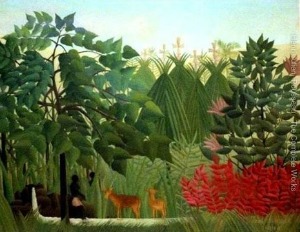
Jung is looking for something although he doesn’t know what. When he meets the Red One, Jung is a tower guard, standing at the highest point of a castle. He says, “I wait without knowing what I’m waiting for” (p. 212). Like the Hero Siegfried, he carries a horn; unlike Siegfried, he doesn’t use it. In Jung’s dream about slaying Siegfried, Siegfried sounded his horn “with a jubilant sound,” rounded the mountain path “boldly and magnificently,” and moments later “fell slain” at Jung’s hands (pp. 160-161). Jung knows the strengths of this particular Hero will not serve him in this encounter. In his dream, he murders Siegfried, his Hero from his personal unconscious, because swashbuckling derring-do is not the order of the day: “The dream showed that the attitude embodied by Siegfried, the hero, no longer suited me. Therefore, it had to be killed” (Jung, 1961, p. 180). Jung needs to find a more suitable Hero archetype to assist him in his individuation journey, one that knows its own limits and is able to form alliances with other parts of his psyche.
Jung may be “in the dark” about what he is waiting for, but his unconscious has issued a summons, and the Red One accepts the call, riding up on his charger to rescue Jung and save not only the day but also Jung’s psychological life. As a hero from the collective unconscious, the Red One is on a par with Jung’s personal Hero of introverted intuition, and they engage with each other on equal terms. The subtitle of this section is “The Images of the Erring,” so we know this is not a one-sided battle. Jung is going to meet a series of imperfect figures who offer him a different perspective and a chance to shift the balance in his psyche; he is not going to give up all of himself.
Jung’s amateurish use of extraverted sensation may partly explain why he attracts the Red One. According to Berens and Nardi (2004), “Extraverted Sensing occurs when we become aware of what is in the physical world in rich detail” (p.7). Jung is looking out over the surrounding countryside, noticing the scenery, and following the movement of the Red One’s red coat as he gets nearer and nearer to the castle: “My gaze wanders widely over solitary countryside, a combination of fields and forests” (2009, p. 212). He paints a picture with broad brush strokes, certainly not with the “rich detail” of extraverted sensation in the heroic position, but he’s made a start.
Jung shows willingness to engage with the Red One when he opens the door and allows him to enter the castle unchallenged, but neither one of them understands the other: “I know just as little who you are, as you know who I am” (p. 214). Jung, it turns out, is a party pooper extraordinaire whereas the Red One likes to have fun. In a lecture to the Asheville Jung Society, Jungian analyst Murray Stein (2010) describes the Red One as the “pleasure principle.” According to the Red One, “Life doesn’t require any seriousness. On the contrary, it’s better to dance through life” (p. 216). A unique strength of extraverted sensation is the pure enjoyment of life (Haas & Hunziker, 2006, p. 41). Jung is certainly lacking in this department: “My life in the castle is poor,” he tells the Red One. And The Red One agrees:
You’re an unbelievably ponderous and serious person. … Your solemnity smells of fanaticism. You have an ethical air and a simplicity that smacks of stale bread and water. … I really don’t see why you have to be so solemn. You wholly spoil the fun. (pp. 213-216)
While Jung needs to lighten up a little, the Red One needs to find a way to be serious when life warrants it. Each moves psychologically towards the other when they manage to find a pleasurable topic that they can discuss in a serious manner: the art and purposes of dancing. The Red One takes Jung’s references to dancing seriously because dancing is “his own domain,” and so the Red One “accepted some of my seriousness, and I accepted some of his joy” (p. 218-219). Once Jung accepts some of the Red One’s joy, he finds the eloquence of the extraverted sensing language: “that strange joy of the world that comes unsuspected like a warm southerly wind with swelling fragrant blossoms and the ease of living” (p. 217). How much more expressive than his bland description of the forests and fields earlier!
Even so, Jung thinks the Red One might be his own, personal devil. Not only does the inferior function bring joy but also pain and despair. Jung’s green garment—depicting his psychic yearning for the joys of the natural world, life, and fertility—shines like a beacon from the top of the tower, calling the Red One. And the red coat of the Red One brings the blood of life into his castle. When the red devil suggests that they dance together, Jung literally comes to life: “My green garments everywhere burst into leaf” (p. 216). However, risk and danger accompany joy. Holding the tension of the opposites means embracing both.
Meeting the Red One moves Jung towards wholeness. At the end of his first encounter with the Red One, Jung is overcome with emotion: “Your image fades. Let me take your hand, beloved, who are you? who are you?” (p. 217). He sounds more than a little infatuated with the Red One; perhaps his extraverted sensing Anima is stirring. Now that Jung has begun his inner work, he can’t go back to being the person he was before, so when he encounters Ammonius the Anchorite in a subsequent active imagination session, he takes the whiff of extraverted sensation along with him.
Ammonius the Anchorite – Introverted Intuition
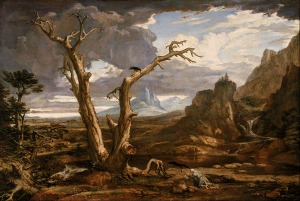
According to Berens and Nardi (2004), those with introverted intuition in the dominant position are good at “synthesizing the seemingly paradoxical or contradictory,” a process which can take understanding “to a new level” (p. 7). Ammonius tells Jung that words can have multiple meanings and passages various interpretations: “When you look again at the lines before you, certain things appear new or even new thoughts occur to you that you did not have before. Every word can work productively in your spirit” (p. 241). Ammonius’ mistake in the past was to fixate on one meaning: “I’ve spent many years alone with the process of unlearning” (p. 247). He has had to forget what he thought he knew and open himself up to other interpretations.
Ammonius is on an introverted intuitive quest: he is trying to unlock the complexities of religion. He has looked back in history and traced the development of religious doctrines from the primitive tribes up to the present moment, and he sees their evolutionary process and their commonality: “It’s erroneous to believe that religions differ in their innermost essence. Strictly speaking, it’s always one and the same religion. Every subsequent religion is the meaning of the antecedent” (p. 258). Ammonius is now looking ahead to the doctrines of the future: “I read the gospels and seek their meaning which is yet to come. We know their meaning as it lies before us, but not their hidden meaning which points to the future” (p. 258). Divining the unknown is an ideal job for introverted intuition:
[The mind of the introverted intuitive] usually travels from the past to the future, seeking to fit a particular situation in a large context. It picks up patterns, symbols and images from different seemingly unrelated fields, identifies similarities and provides meaning. This can help solve problems by juxtaposing ideas, finding analogies or simply by rooting out the quintessential reality, discovering the origin in universal stories and human experiences, culling wisdom from the infinitely small to the infinitely large … naturally travel[ing] from the microcosm to the macrocosm. (Poirier, n.d. para. 1)
Divining the unknowable, however, is a fool’s quest that can distract a person for a lifetime of eternities.
Introverted intuition needs the grounding of extraverted sensing, which is in short supply in the desert. The paradox for Ammonius is how the Word could have possibly become flesh, yet he ignores the realm of the flesh in seeking an answer; in fact, he pays scant attention to the needs of the flesh at all. Ammonius feeds Jung’s spirit with his talk of the Scriptures but does not feed his stomach. At the end of the first day, he invites Jung to sleep well and offers him an uncomfortable bed and an unappetizing supper: “Not far from the entrance lies a heap of reeds covered with mats. Next to it there is a pitcher of water, and on a white cloth there are dried dates and black bread” (p. 247). Stale bread and water are just what the Red One thought would suit Jung, so Ammonius is right on target.
Jung’s psyche notices that Ammonius lacks extraverted sensation and fills that void with his commentary. Ironically, it is Ammonius’ world of introverted intuition that Jung describes in extraverted sensing terms. That world, the “sprouting garden of his soul,” is a full-on sensation experience: “His eye rests on the garden, and his ear listens to the source, and his hand touches velvet leaves and fruit, and his breath draws in sweet perfumes from blossom-rich trees” (p. 248). All five senses are engaged. Even though Ammonius does not recognize it, the situation is urgent, and some real-world action is needed. Jung uses extraverted sensing imagery to paint a picture of an over-ripe, sexualized world, a world ready to explode:
He strolls under laden fruit trees and … his hand touches grain a hundredfold. Under dark leaves the overfull reddish blossoms swell toward him from abundant buds, and the fruit almost bursts with thronging juices. Fragrant resins drip from his trees and under his feet thrusting seed breaks open. (p. 248)
Surely, a trip to the brothel is just around the corner.
As the hours pass, the initial attraction between Jung and Ammonius fades. The barren wasteland of Ammonius’ external environment offers few temporal distractions and demands and has enabled him to concentrate on eternal mysteries, but Jung needs more: “What shall I do this whole long morning? I do not understand how Ammonius could have endured this life for even a year” (p.253). He reacts bodily: “The unreality nauseates one. … What am I actually doing here?” (p. 254). This is a reaction of the flesh. Something is stirring in Jung: “I thought differently yesterday” (p.254). The Red One is opening his psyche to the joys of life. Whereas Jung first treated Ammonius as a guru figure, he now wants to debate with him: “But don’t you think … ? Yes, but … ?” And devastatingly for Ammonius, “Don’t you believe that you’d succeed if you were nearer men?” (pp. 257-258). Jung goes into the encounter as one introverted intuitive Hero seeking to learn from another; instead, because he has been organically changed by his encounter with the Red One and is slowly, subtly, but surely “greening up,” he finds himself noticing the deficiency of extraverted sensation in Ammonius’ world and passing that awareness onto him.
Jung is a catalyst for Ammonius’ psychological development, just as the Red One was for his development. The essence of Jung’s presence and ultimately his questioning cause Ammonius to wonder if he needs “the stimulation of others” to find the meaning he is seeking (p. 258). “I feel that you come from a strange world that has nothing to do with mine,” he tells Jung (p. 255). And eventually, Ammonius begins to see Jung as a devil: “I’m confused—you are Satan—I recognize you—give way, adversary!” (p. 258). Jung interprets this as follows: “I had to appear to him as the devil, since I had accepted my darkness. I ate the earth and I drank the sun, and I became a greening tree that stands alone and grows” (p. 262). Jung’s initial encounter with the Red One started a chain reaction, and Jung and the two fantasy figures have begun a transformation.
Jung has to find a way, as must we all, to hold the tensions of the opposites in his psyche. Bread and water are not what Jung needs, nor does he need a banquet every day. Ammonius offers him a subsistence diet whereas the Red One offers over–indulgence. They are a pair of opposites, with sensory deprivation on the one side and over-stimulation on the other. Immersed in his heroic realm of introverted intuition, Ammonius is without the sorrows of daily living: “In the desert the solitary is relieved of care …” (p. 248). Unfortunately, the absence of care (worries) also means the absence of joy, for they are opposites, and each defines and informs the other. Later on, Jung finds these “two strange journeymen” at odds, yet managing to get along (p. 268). However, he describes his meeting with them in a section of The Red Book called “The Remains of Earlier Temples,” suggesting that the heroes these figures worshipped previously have now been unseated. Both the Red One and Ammonius are living in the ruins of their previous selves. Jung should not be modeling himself after either one of them.
The Red One and Ammonius have each entered into and experienced the world of the other. Not only that, each has experienced that world to excess and been rescued from it by the other. After being stimulated into action by Jung, Ammonius left the solitary life to form a monastery, but in the process was filled with “an insatiable greed to see the world. I drank wine and saw that women were beautiful. I wallowed in pleasure and wholly turned into an animal” (p. 270). However, at the height of his excesses, he encountered the Red One, who helped him see the error of his ways and return to the monastery. The Red One, for his part, became serious after meeting Jung. He converted to Christianity and entered a monastery, where he introduced dancing into the worship and, in fact, across the entire town. The dancing became so widespread and constant that he wore himself out: “It was terrible. I fled into solitude. … [Meeting Ammonius] gave me strength. Through him I could regain my health. You’ve heard how he took heart from me, too, and found his way again” (p. 271). Each came to the aid of the other.
Ammonius and the Red One are a comedic duo, “sheepish and ridiculous, and yet pitiable” (p. 269), a pair of grumpy old men who don’t particularly like each other but can’t live without each other. In unison, like Cheech and Chong, they say, “We can never be friends,” but together they can endure (p. 272). They have found the middle way. Ammonius finds the Red One to be a “toned-down type of devil,” and the Red One acknowledges that “the monk is hardly the fanatical type” (p. 271). One must “not identify with either of the extremes” (Stein, 2010). These two fantasy figures are not role models for Jung; rather, they are a lesson in moderation. Each perspective tempers the other, and together they point the way to psychological wholeness.
Carl Jung

Jung found a way to access his inferior function of extraverted sensation by returning to an activity he had enjoyed in childhood. There is some evidence that Jung liked to build things when he was a child: “He realized that he needed to recover the emotional tone of childhood. He recalled that he used to like to build houses and other structures, and he took this up again” when he started his active imaginations (Shamdasani, 2009, p. 17). Stein (2010) imagines that Jung would go out into his garden at lunchtime and “play” at building castles in order to “release fantasies.” The mindfulness of the activity allowed the fantasies to come forth. Jung was on a post-heroic quest to find the hidden depths of himself.
Jung’s search for wholeness is mirrored by the form and content in The Red Book itself. Although its narrative voice is introverted intuition, its artistic form comes from extraverted sensation. The book was “a large folio volume of over 600 pages, bound in red leather,” specially commissioned by Jung (Shamdasani, 2009, p. 32). No doubt the Red One would approve the color. With his many revisions, Jung was attentive to both the book’s content and presentation. He carefully pasted his parchment manuscripts into it, he took care over the binding, he used calligraphy, and he painted figures and other illustrations. He treated the book with reverence; it was a treasure reminiscent of a medieval manuscript. In his Epilogue to The Red Book, Jung (2009) acknowledges the significance of his creative process:
I always knew that these [active imagination] experiences contained something precious, and therefore I knew of nothing better than to write them down in a “precious,” that is to say costly, book and to paint the images that emerged through reliving it all—as well as I could. (p. 555)
In fact, at some point, Jung realized that the book was actually a letter, perhaps even a love letter, to his extraverted sensing Anima: “In putting down all this material for analysis, I was in effect writing letters to the Anima, that is, to a part of myself with a viewpoint different from my conscious one” (Jung, 1961, p. 186). He heard the voice of his Anima tell him, “That [book] is art” (Jung, 1961, p. 186). Since he viewed himself as a man of science, this took him by surprise. In developing his spine of Hero-Anima, Jung was holding the tension between the opposite worlds of science and art, and therein lies psychology.
As he worked on The Red Book and moved along in his psychological journey, Jung reached a point where the use of words failed him: “Words and paper … did not seem real enough to me; something more was needed” (Jung, 1961, p. 223). More than anything else, extraverted sensation likes to keep it real; it values “practical, hands-on experience above all” (Haas & Hunziker, 2006, p. 34). Jung’s Anima was demanding even more attention. Around 1928-30, Jung (2009) turned his attention away from The Red Book and stopped writing in it (p. 555). However, he did not stop his inner work. Instead, he allowed his extraverted sensing Anima continued expression through further art work, including mandalas, those “cryptograms concerning the state of the self, which were presented to me anew each day” (Jung, 1961, p. 196). Although Jung painted the first of his mandalas in 1916, it was 1918-19 before he first started to understand their significance (2009, p. 195), and his interest in them over the next decade steered him towards alchemy and away from the now inadequate narrative structure of The Red Book. Removing the intuitive narrative filter of the written word gave fuller reign to Jung’s extraverted sensation, bringing forth messages from his unconscious and giving them material form.
Jung’s extraverted sensation found particular expression through his continued experience of building a primitive stone house at Bollingen on the shores of Lake Zurich and chiseling images on it. He started his first tower in 1923, continuing his building work well into his old age and adding more towers and an upper storey. The tower was a physical representation of an open channel to his unconscious. Looking back on it over the years, he said he had realized that the structure was “a concretization of the individuation process” (1961, p. 225). Building the tower showed his seriousness, his intent; it was an invitation to his unconscious. Images arose through a psychological conduit and found their place in the outer world via the tower.
It seems clear, too, that this process allowed Jung to tap into what the Beebe model would call his daimonic introverted sensing, his eighth function, with its bedrock of past experiences and known data. Writing as an elderly man, Jung (1961) said that we are historical beings, rooted in our ancient past:
Our souls as well as our bodies are composed of individual elements which were all already present in the ranks of our ancestors. The “newness” in the individual psyche is an endlessly varied recombination of age-old components. Body and soul therefore have an intensely historical character and find no proper place in what is new, in things that have just come into being. That is to say, our ancestral components are only partly at home in such things. (pp. 235-236)
Jung realized that the way of things to come is found not in the future but in the source whence we all came. Jung divined the unknown and found the answer through a deep connection with his least conscious function. His words are a reminder that communing with the Anima opens the door to the unconscious, but that is only the beginning of the individuation journey.
Bringing an idea or concept into the light of day is a challenge for introverted intuition, even when it is dominant. An inner knowing is what drives an introverted intuitive, but often the knowing stays “inner.” According to Berens and Nardi (2004), for people with dominant introverted intuition, “life seems to be a process of ‘knowing’ without any prior or direct experience. Usually they are right, although they may have a hard time finding words to explain to others how they know [what they know]” (p.46). Turning that knowing into something concrete and tangible can be almost impossible. Haas and Hunziker (2006) explain that the language of introverted intuiting “may seem totally disconnected from the external world” (p. 148). Introverted intuiting can loop around on itself in ever-increasing circles of complexity, in danger of never seeing the light of day.
The Red Book is one incremental point in Jung’s stream of artistic output. From the jottings and sketches of the Black Books, to the paintings and mandalas of The Red Book, to the tower at Bollingen, Jung set aside his heroic introverted intuiting and increasingly made room for his Anima. The intuitive “knowing” was not enough. He was a highly intelligent, well-educated, knowledgeable person; indeed, his reputation was built on these attributes, yet he had the humility to set that part of himself aside and give himself over to his extraverted sensing experiencing. Beebe believes this process is what gave Jung his integrity:
One of the problems people had with Jung was the suspicion that he was this brilliant narcissistic character who wasn’t maybe entirely honest. And certainly, there’s a part of Jung that wanted to be the prophet and the genius. But in the Red Book, one can feel strongly the integrity of the man—not just the brilliance or the courage, the fortitude—but the willingness to engage and let himself be instructed. He knew so much before he started. … But he ends up putting his knowing in the service of his experiencing… . (Beebe & Zabriskie, 2011, p. 420)
Jung’s integrity shines through The Red Book.
Developing the spine is not a one-time alignment of opposites but rather a continued balancing and rebalancing of tensions, a lifelong journey. Jung (2009) explains that finding meaning comes to us as we participate in life, for it is the changes that take place in us that allow us to find more meaning as we go along: “if you change, the countenance of the world alters” (p. 262). We cannot afford to neglect our inner work, but we cannot disengage from the world either. Jung’s continued inner work with the spirit of the depths kept him grounded and allowed him to function with greater integrity in the spirit of the times. He put his introverted intuiting Hero at the service of his extraverted sensing Anima, worked at maintaining the tension of these opposites, and thereby developed his psychological spine.
References
Beebe, J. (2012). Psychological Types in Freud and Jung. Jung Journal: Culture & Psyche, 6(3), 58-71.
Beebe, J., & Zabriskie, B. (2011). John Beebe in conversation with Beverley Zabriskie. Journal of Analytical Psychology, 56(3), 407-423.
Beebe, J. (n.d.). A Jungian analyst talks about psychological types: A visit with John Beebe. (n.d.). [DVD]. Retrieved September 13, 2014, from Inner Explorations.
Berens, L., & Nardi, D. (2004). Understanding yourself and others: An introduction to the personality type code. Huntington Beach, CA: Telos Publications.
Haas, L., & Hunziker, M. (2006). Building blocks of personality type: A guide to using the eight-process model of personality type. Huntington Beach, CA: Unite Business Press.
Jung, C.G. (1921/1971). Psychological types (R. F. C. Hull, Trans.). In H. Read, M. Fordham, & G. Adler, (Series Eds.), The Collected works of C.G. Jung (Vol. 6, pp. 330-407). Princeton, NJ: Princeton University Press.
Jung, C. G., (1934–1954/1981). The Archetypes and the collective unconscious, (1981, 2nd ed.) (R. F. C. Hull, Trans.). In H. Read, M. Fordham, & G. Adler, (Series Eds.), The Collected works of C.G. Jung (Vol. 9, Part 1). Princeton, N.J.: Bollingen.
Jung, C. G. (1961/1963). Memories, dreams, reflections (A. Jaffe, Ed.) (R. Winston & C. Winston, Trans.). New York, NY: Vintage Books.
Jung, C. G. (2009). Liber novus. In S. Shamdasani (Ed.), The red book (Reader’s edition) (M. Kyburz, J. Peck, & S. Shamdasani, Trans.). New York, NY: W.W. Norton.
Poirier, D. (n.d.). Dominant introverted intuition. Retrieved September 13, 2014, from Personality Pathways.
Shamdasani, S., & Beebe, J. (2010). Jung becomes Jung: A dialogue on Liber Novus (The Red Book). Psychological Perspectives, 53(4), 410-436.
Stein, M. (2010). Carl Jung’s red book. AJC#10-11. [DVD]. Available from Asheville Jung Center.
von Franz, M-L. (1974/1995). Shadow and evil in fairy tales. (Revised ed.). Boston, MA: Shambhala.
Images
(in order, and excepting Tables and Figures):
C.G. Jung, circa 1913-1930. Text and image courtesy of W.W. Norton & Company and The Philemon Foundation.
Henri Rousseau, “La Cascade” (“The Waterfall”), 1910. Courtesy: Art Institute of Chicago.
Washington Allston, “Elijah in the Desert,” 1818. Courtesy: Museum of Fine Arts, Boston.
Photographer unknown. Jung’s Bollingen retreat.


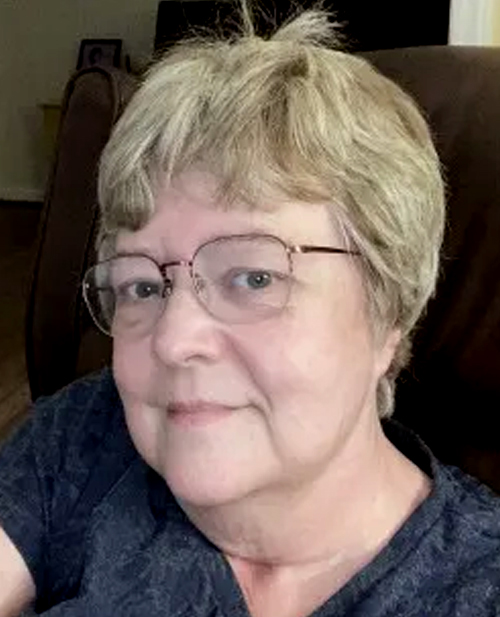
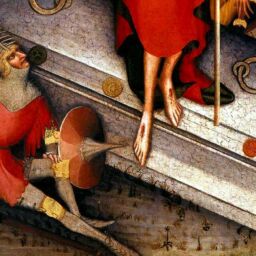
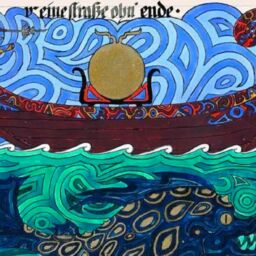
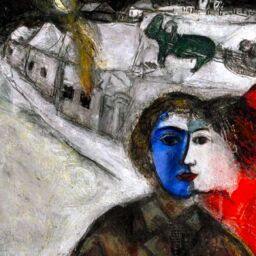
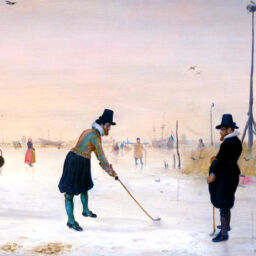
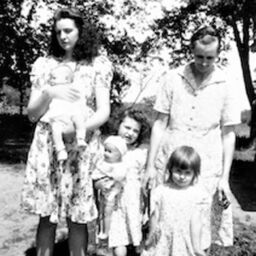
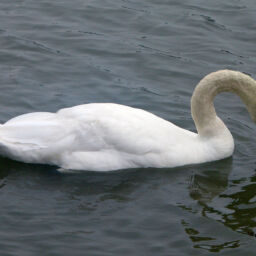
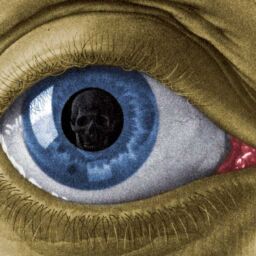
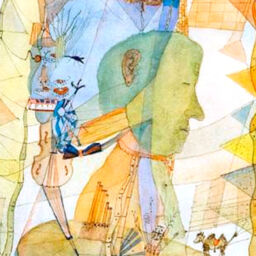
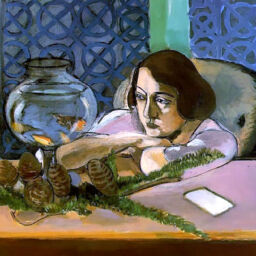
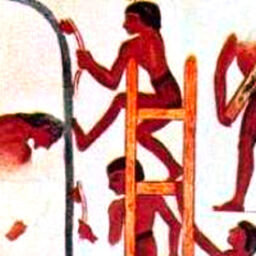
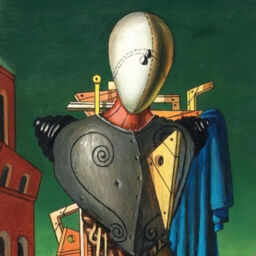
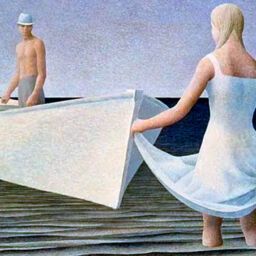
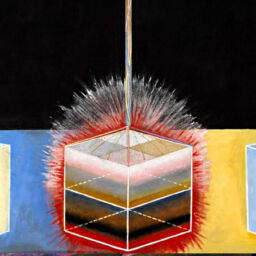
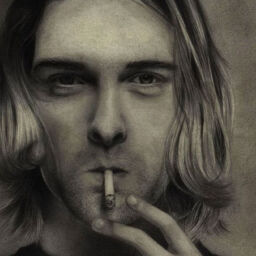
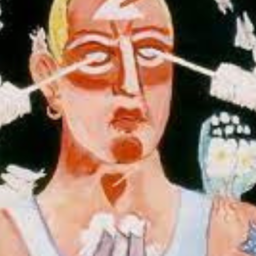
Thank you, Jennifer, for the excellently structured commentary. It enriched me greatly. I would have to entrust my understanding of what you described in your hands and hope for Mercy:
For Jung’s psyche, Ammonius the Anchorite represents Introverted Thinking.
As Jennifer intuitively perceived, the statement “the stimulation of others” is important, but that is not Extraverted Sensation, but Feeling. Re-reading the same words and finding new meaning (the Word/Logos is related to Ti) gives away his nature. He is missing his other half, Extraverted Feeling, to be of help to Jung.
Also, Fire (red) is the element of Feeling, not Sensation. Free outflaw of emotions (as Jung experienced during his meeting with the Red One and as Jennifer notes gushes with emotion at the end of it) might not always mean Extraverted Sensation.
Later on the two are re-united with a journey over the Sea (the unconscious helped) and rub off each other in some strange ways. Jung’s consciousness absorbs the content they brought him and the archetypes recede, having done their job.
Happy ending.
Now please do the Librarian/old Scholar part. I believe you can uncover valuable meanings there.
Kind Regards
I think it’s fair to argue that Jung’s most prioritized function might have been introverted intuition. His own statements on this matter are not quite clear, as at one point he claimed to be oriented by sensation and thinking, and at another by intuition and thinking, and in the latter case, doubt seems to remain as to which he claimed dominant, though the more common interpretation seems to be that he was saying thinking is dominant. At the time of writing Psychological Types, Jung appeared to spill that he is of a rational psychology, and thus, one would surmise given his other remarks, that at the time he thought thinking was dominant and sensation auxiliary, with intuition and feeling unconscious.
With a holistic look at things, I have found the most encompassing solution to the conundrum is that not all types are created even close to equal – Jung was far from a pure intuitive, whatever he was, as he bears significant difference from for instance the woman he describes in his Freeman interview late in life.
It seems like Jung and Marie-Louise von Franz were some of the rare cases of people who truly develop two exceptionally strong functions (relatively rare in the world).
Thus, I would think to call both of them intuitive-thinkers – somewhere in between (von Franz herself seems to suggest in interview that she thinks her typology was very close to Jung’s). There can be little doubt to me that, unlike the many academics of our time, they do not exclusively appeal to rational thinking, which is part of what makes their ideas so ripe for those who seek an alternate take on things.
But both of them seem to have been pretty strong intellectuals, unlike some of the more purely irrational intuitive types one encounters, such as the one Jung spoke of in his Freeman interview. And lest someone think they can pretty much switch nonproblematically between intuition and thinking, I’d say that’s probably overestimation: it seems fairer to say they were truly somewhere between in preference.
In other words, I can see those of a more purely rational psychology having difficulty with their ideas, likely on the basis of these rationals’ typologies, and also those of a more purely irrational preference finding their ideas appealing way too much to the thinking function.
Of course, it’s likely both Jung and von Franz took significant steps to transcend what they felt were the limitations of the ego and its habitual patterns, but remnants of whatever portion of their typologies was innate exist in so far as some ego is generally inevitable.
Jenny takes the reader into Jung’s journey to explore the depth of self in this informative, well-written, and intriguing article. Nice job!